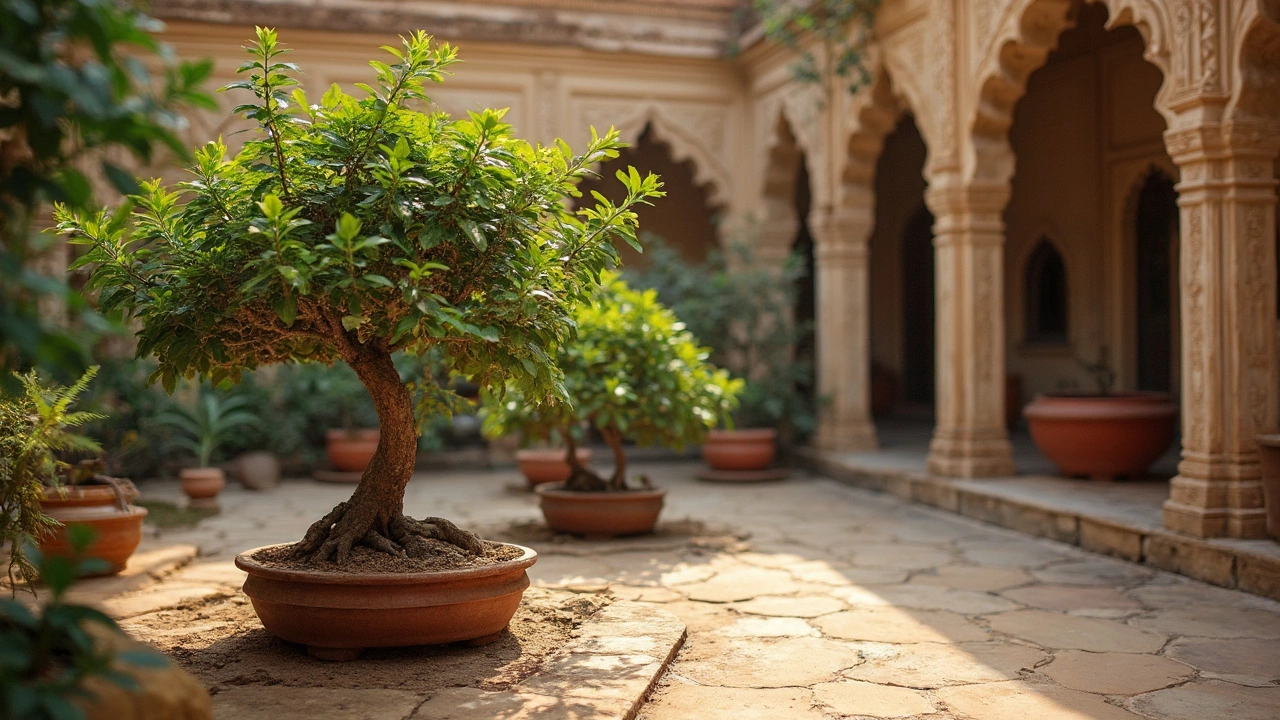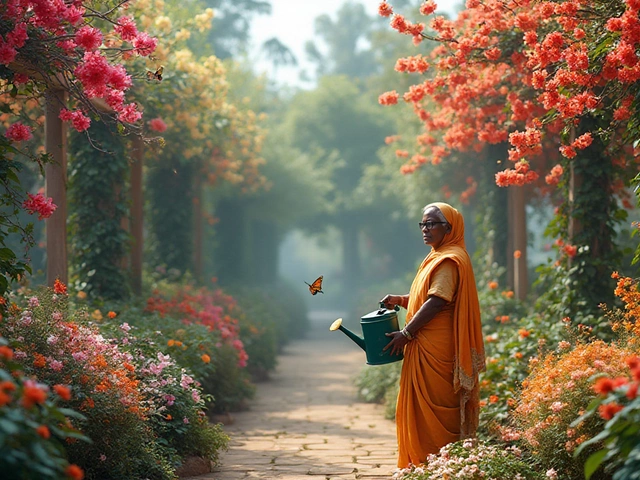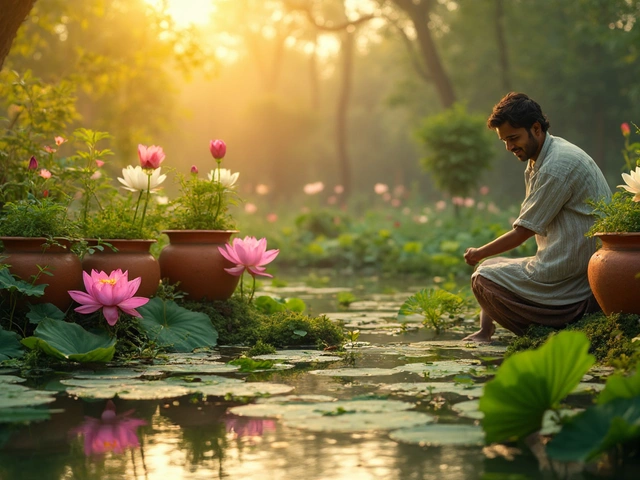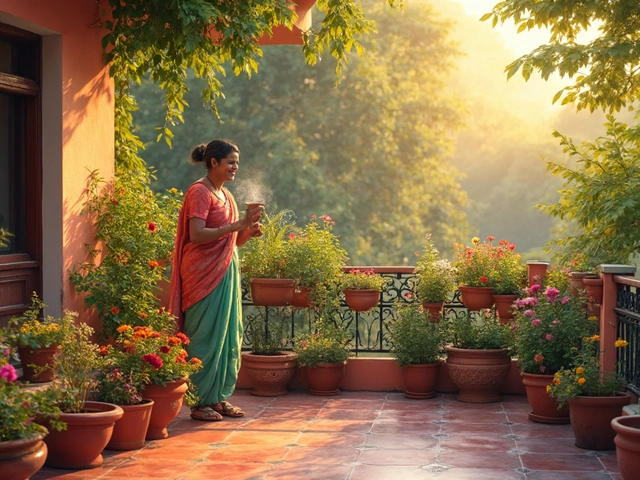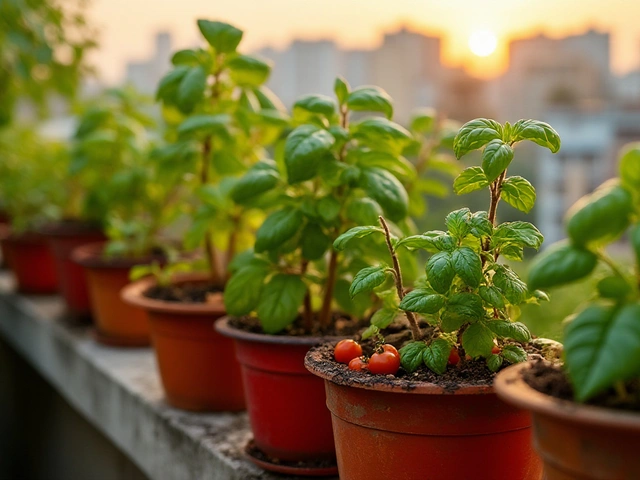Ever wondered why your bonsai seems a bit droopy? If you're seeing yellow leaves or mushy roots, chances are you're overwatering it. Yep, it’s a common mishap among plant enthusiasts.
One main sign of overwatering is yellowing leaves. With too much water, the roots can’t breathe. It's like you're drowning the poor guy. Instead, roots sit in stagnant water, leading to root rot, which sounds as bad for plants as it does for us.
Another tell-tale sign is the soil. Constantly soggy or smelling funky? Not a good sign. Healthy bonsai soil should be damp, not soaked. Think of it like a wrung-out sponge—not too wet, not too dry, just right.
Curious to learn more about what might be causing these watering woes? Stay tuned as we dive deeper into the causes and, more importantly, how to make sure your bonsai is one happy mini-tree.
Symptoms of Overwatering
Spotting the signs of an overwatered bonsai can be a bit tricky if you’re new to plant care, but getting it right can save your little tree's life. Let’s break it down.
Yellowing Leaves
If your bonsai's leaves are turning yellow, it’s not trying to match the autumn colors. This is a red flag (or yellow, to be exact) for overwatering. Too much water deprives roots of oxygen, causing the plant to stress out and lose its green vibrancy.
Mushy Roots
Healthy bonsai roots should be firm and light-colored. But if they’re dark and mushy, that’s a sign they’re sitting in too much water, leading to root rot. This can be a death sentence if not addressed quickly.
Soil Sogginess
Ever touch the soil and feel like you dipped into a swamp? That’s a sure sign of overwatering. Bonsai soil should feel like a damp sponge, not a soaked one. If it smells funky too, consider this an urgent cry for help.
Leaf Drop
Is your bonsai shedding leaves faster than you can sweep them up? Think of it as your plant sending you a desperate message. Excess water can prompt leaves to drop as the tree struggles to survive.
Edema
This one's less known but equally telling. Edema manifests as small blisters on leaves or stems, caused by the plant absorbing more water than it can use. It’s like giving bonsai an unwanted water balloon treatment.
| Symptom | What It Means |
|---|---|
| Yellowing Leaves | Oxygen-deprived roots |
| Mushy Roots | Root rot from excess water |
| Swampy Soil | Constant overwatering |
| Leaf Drop | Stress from overwatering |
| Edema | Blisters from water absorption |
Check your bonsai regularly for these symptoms. The sooner you catch them, the sooner you can nurse your tree back to health. Remember, it's all about balance!
Causes of Overwatering
So, how did we end up with that soggy mess instead of a lush, healthy bonsai? Well, there are several usual suspects behind overwatering.
Misjudging Soil Needs
It's super easy to misjudge what your bonsai’s soil actually requires. Bonsais are unique, and not every soil type suits them. Some soils retain too much moisture, especially if they're not well-draining. This keeps roots wet longer than they should be.
Poor Pot Drainage
Sometimes, it's not the watering but the pot itself. A pot with no drainage holes or blocked ones? That's trouble. Water needs someplace to go, and if there's no escape route, it'll hang around your roots, causing all sorts of issues.
Weather Conditions
Weather plays a part, too. In more humid environments or during the rainy season, bonsai require less water. But if you keep up the same watering schedule year-round, it's a quick route to a soggy bonsai.
| Season | Water Needs |
|---|---|
| Summer | Higher due to evaporation |
| Winter | Less, plants are dormant |
It's helpful to adapt your watering based on seasons. Keeps the plant guessing (in a good way).
Incorrect Watering Schedule
Of course, not every bonsai is the same. Some need water every day, others once a week. Have a one-size-fits-all approach? You might end up drowning the little tree.
Being mindful and attentive can help diagnose and adjust the watering routine better. Keep observing, and avoid letting watering become a mindless task.
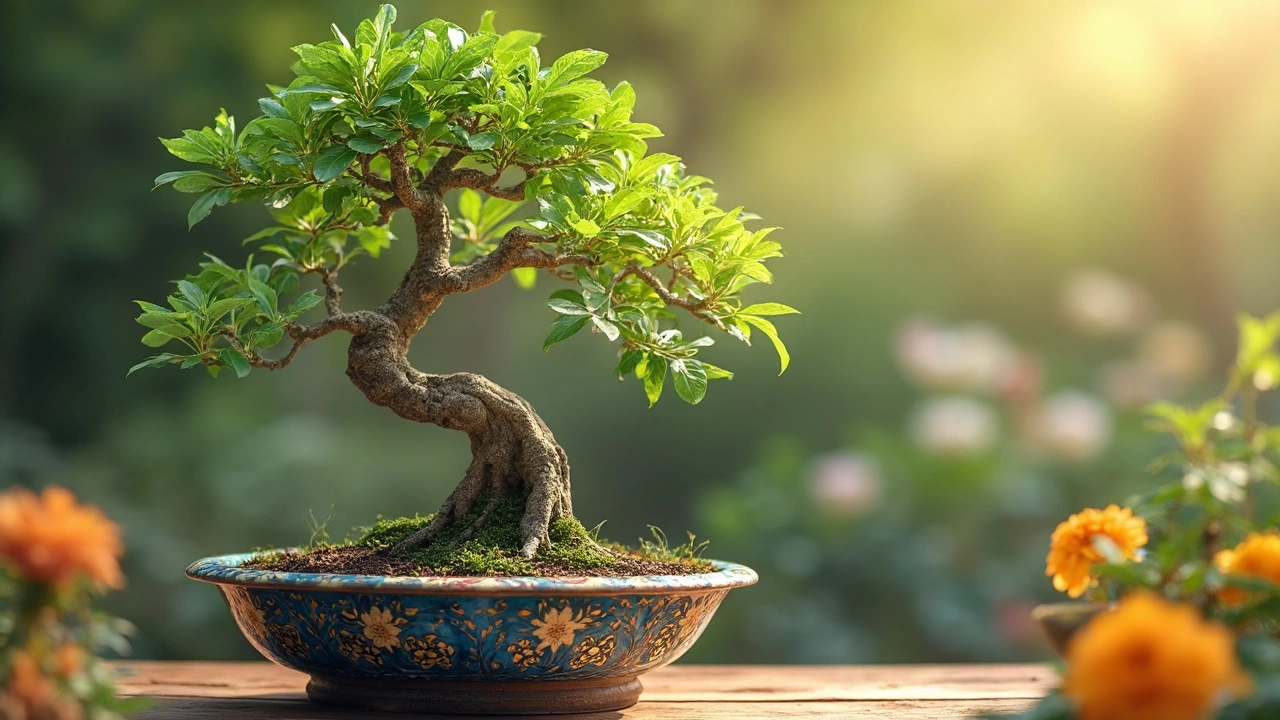
Preventive Measures
Want to avoid an overwatered bonsai in the first place? Let's chat about how to manage your watering routine like a pro.
Proper Pot and Soil
First things first, you need a pot with good drainage. Your bonsai doesn't want to swim—it needs to drain excess water away efficiently. Look for pots with ample holes at the bottom.
Also, choosing the right soil can make all the difference. Go for a bonsai mix that allows water to flow freely while retaining enough moisture. A mix with grit like pumice or lava rock is often recommended.
Water Wisely
There's no one-size-fits-all answer to how often you should water. Keep an eye on the top inch of soil—once it feels dry to the touch, it’s time to water. Depending on your climate and plant type, this could be every day or every few days.
When you do water, do it thoroughly. Water until you see it draining from the bottom of the pot. This ensures every root gets its fair share of a drink.
Environment Matters
Your bonsai's environment plays a major part in its watering needs. Placed in a sunny window? It'll likely drink more. Sitting in a cooler corner? It might need less. Adapting your schedule to the seasons is wise.
Signs of Thirst
Keep an eye out for signs of underwatering too. Leaves curling inward or falling off could mean your bonsai needs more water. Finding the perfect balance is key.
By paying attention to these tips, you can keep your bonsai just hydrated enough, avoiding the dreaded overwatering pitfall.
Steps to Revive
So, you've realized your little tree is in distress. Don’t worry; it’s not too late to bring it back to life. With the right care, your bonsai can bounce back and flourish.
Assess the Damage
First, you need to see just how bad it is. Gently take your bonsai out of the pot and have a look at those roots. Healthy roots are firm and white. If they're black and mushy, it's a clear sign of overwatering and root rot.
Root Pruning
Time for surgery! Snip away those dead roots. Be gentle but thorough. Think of it as getting rid of excess baggage for a fresh start.
Repotting
Once you’ve trimmed the roots, your bonsai needs a new home—fresh soil is key. Use well-draining soil designed for bonsai trees. Remember, bonsai are picky; they love soil that's breathable and drains well.
Watering Wisely
Bonsai care is all about balance. From here on out, make sure you're water-smart. Stick your finger in the soil about an inch deep—only water when it feels dry.
- Place the bonsai in indirect sunlight to minimize stress.
- Reduce watering stress by using a moisture meter if you're unsure.
Following these steps should give your bonsai a new lease on life. Remember, patience is key. With proper bonsai care, you’ll see fresh, green leaves soon enough.
